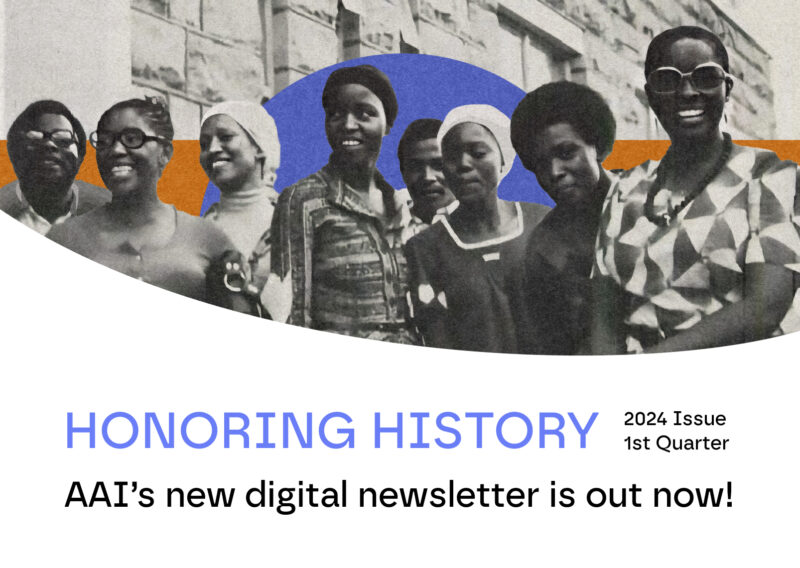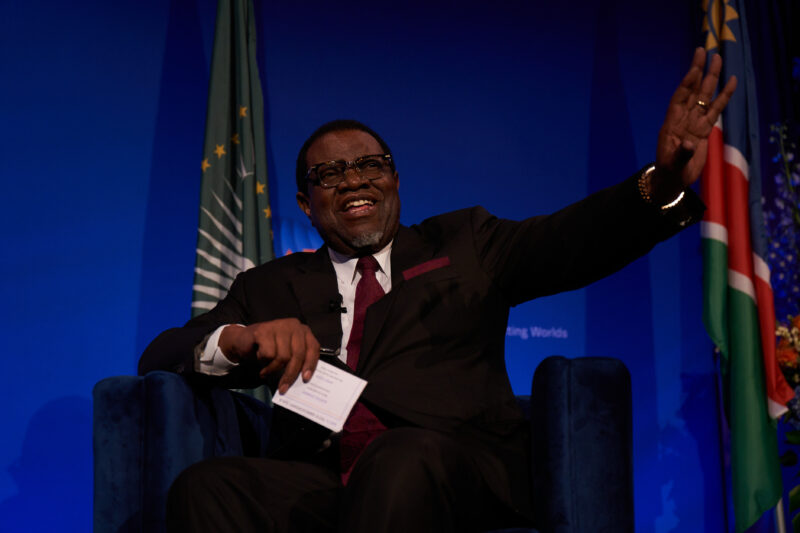From the Archives: Establishment of the African Development Bank
AAI will feature a monthly “From the Archives” blog, highlighting historical milestones in AAI and African history. This blog post features verbatim historical documents from AAI’s files and articles from Africa Report, a monthly publication of in-depth analysis and reports chronicling the continent’s dramatic political and economic developments.
Published from 1956 through 1995, Africa Report became the most significant Africa-focused publication in the U.S.
Africa Report, October 1963. Volume 8, Number 9
Finance Ministers Approve Development Bank
 The Finance Ministers of 22 African states, after meeting for five days n Khartoum, signed the long awaited agreement on August 4 to establish an African Development Bank. The agreement is to be kept open until December 31, by which time other African countries may sign at the United Nations building in New York. Until the Bank begins to function in late 1965, UN Secretary General U Thant will be asked to receive gold and currencies as its trustee.
The Finance Ministers of 22 African states, after meeting for five days n Khartoum, signed the long awaited agreement on August 4 to establish an African Development Bank. The agreement is to be kept open until December 31, by which time other African countries may sign at the United Nations building in New York. Until the Bank begins to function in late 1965, UN Secretary General U Thant will be asked to receive gold and currencies as its trustee.
The agreement culminated a two year effort, initiated at a February 1951 meeting of the UN Economic Commission for Africa, to set up a purely African bank that would promote the continent’s development.
Preparatory research was carried out by a special committee of experts from nine countries (Republic of Cameroon, Ethiopia, Guinea, Liberia, Mali, Nigeria, Sudan, Tanganyika, and Tunisia). This committee will continue to coordinate plans for the Bank in cooperation with the Executive Secretary of ECA.
One major stipulation of the agreement is that members of the Bank’s governing organs and its principal offices must be nationals of countries which are Bank members. The agreement also requires that the initial capital of $250,000,000 be subscribed wholly by independent African governments, with each member to be assessed in amounts from $1,000,000 to $30,000,000, depending on the economic capacity of the subscriber.
The precise scale of assessments is to be based on a special study prepared by the UN Secretariat, which takes into account the factors of gross domestic product, tax revenue, and export earnings. Half of the capital sum will be paid over a five-year period and half will be on call. In view of the limited local resources available, the Bank will have to rely also on funds supplied by non-African governments and institutions. The US, UK, French, and Brazilian governments and observers at the Khartoum conference promised practical support.
The 22 countries which signed the agreement were: Algeria, Burundi, Central African Republic, Congo-Leopoldville, Ethiopia, Ghana, Guinea, Ivory Coast, Kenya, Liberia, Libya, Mali, Mauritania, Morocco, Nigeria, Sierra Leone, the Somali Republic, Sudan, Tanganyika, Tunisia, Uganda, and the United Arab Republic. Ten African nations represented at the Conference did not join in the final agreement; all were members of the French-speaking Union Africaine et Malgache (UAM).
Conference sources indicated that the signatory countries would meet again in six months to decide the location of the Bank, to elect nine members to the board of directors, and to appoint a president for the new institution.



